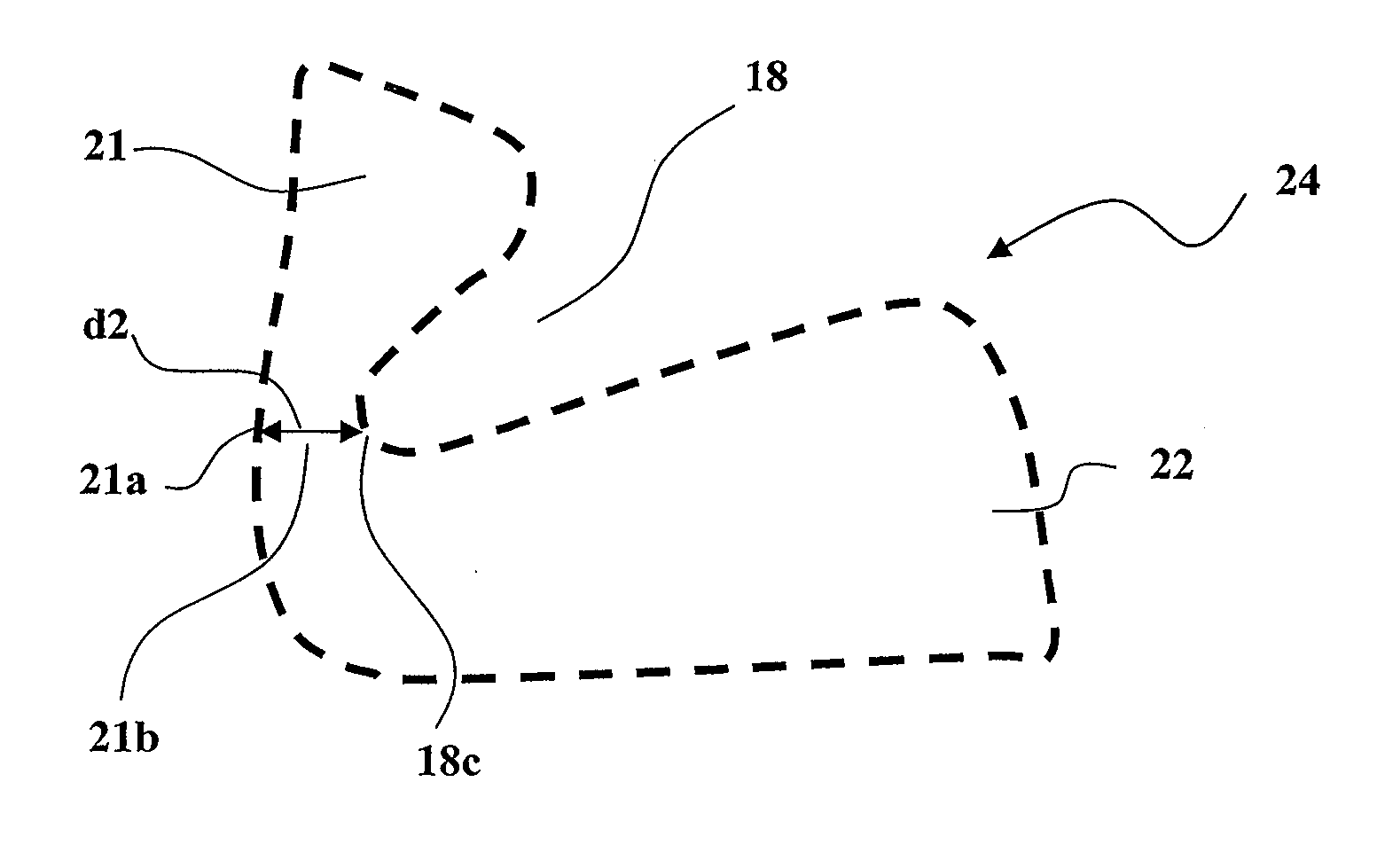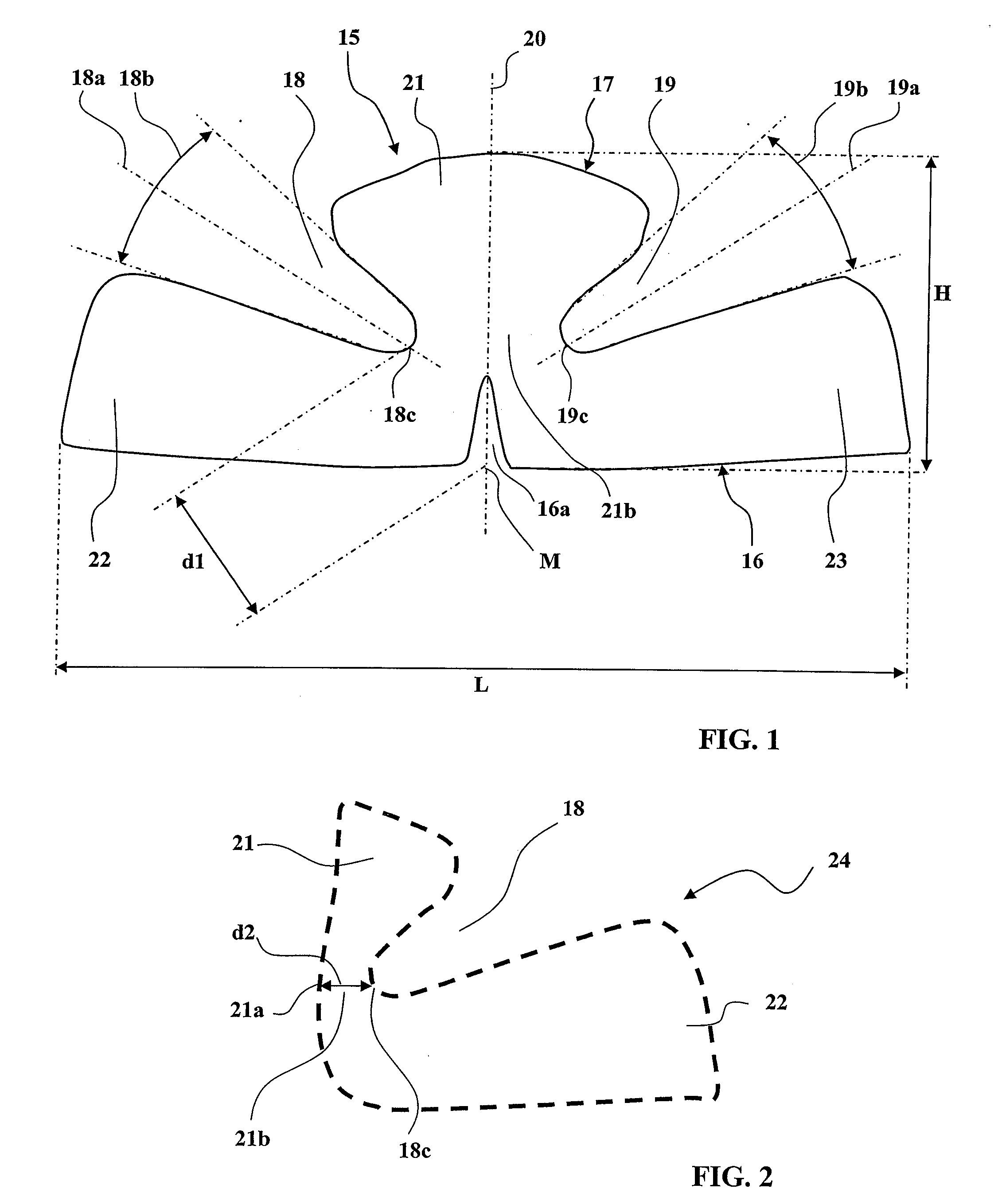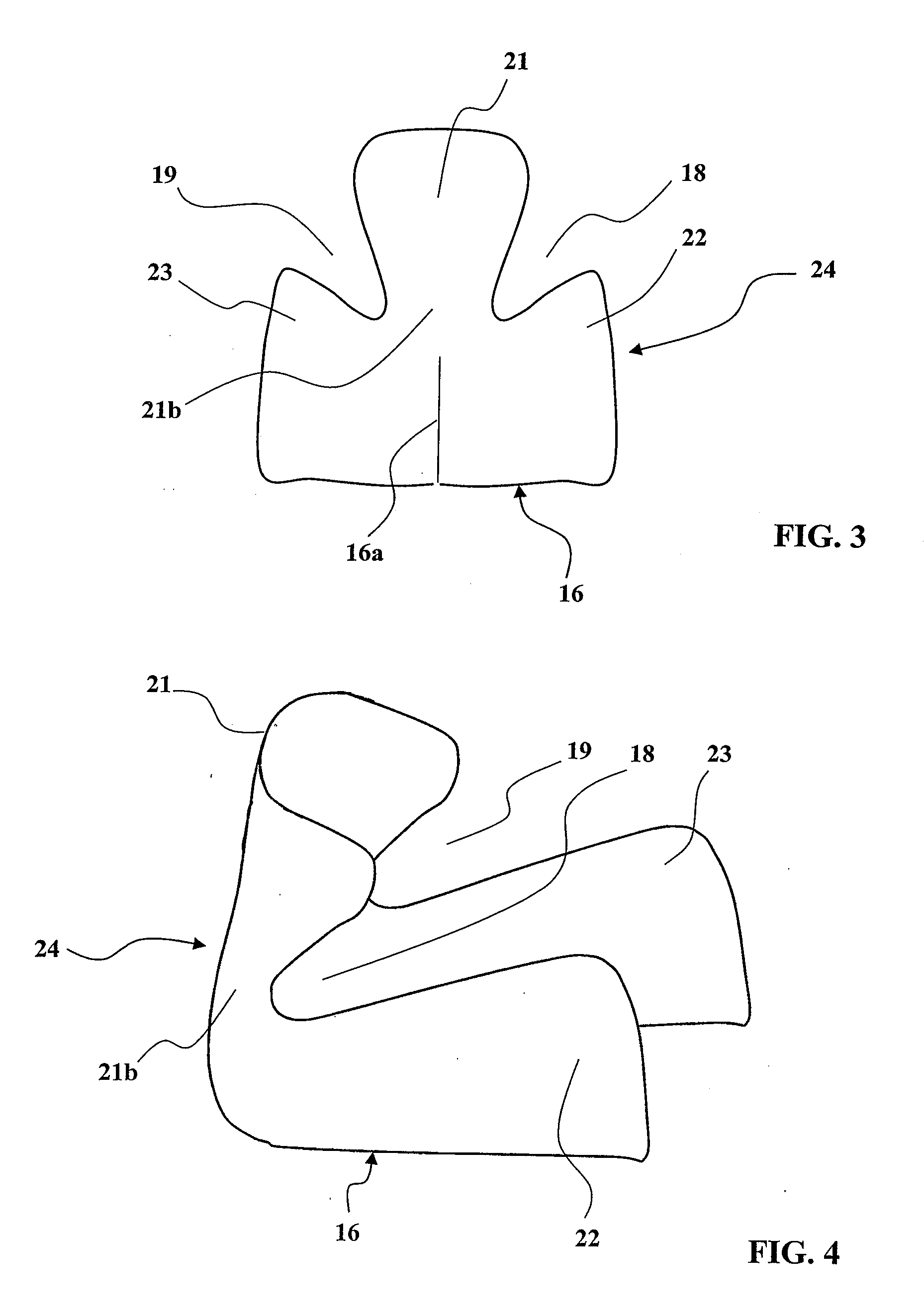Shoe Heel Cup and Shoe Equipped with One Such Heel Cup
a technology of heel cup and shoe, which is applied in the field of multi-purpose sports shoes, walking shoes, orthopedic shoes, etc., can solve the problems of lack of comfort or protection, risk of rapid deterioration of shoes, and insufficient adaptation of traditional shoes to physiological movements, so as to improve comfort and safety of shoes, without compromising comfort
- Summary
- Abstract
- Description
- Claims
- Application Information
AI Technical Summary
Benefits of technology
Problems solved by technology
Method used
Image
Examples
Embodiment Construction
[0042]FIG. 5 is considered first, in order to outline the main structural components of a foot joint and the main movements of that joint.
[0043]The foot 1 is represented in a shoe consisting of a sole 2 and an exterior upper 3 represented in dashed lines.
[0044]The sole 2 of the shoe is resting on a horizontal plane P and the shoe extends longitudinally along a vertical plane perpendicular to the plane P, or plane of the figure.
[0045]Of the foot 1, shown inside the shoe, there are seen the calcaneum 4, the astragalus 5, the cuboid 6, the scaphoid 7 and the cuneiforms 8 that are followed by the metatarsals and the phalanges, not shown.
[0046]The calcaneo-pedal block, consisting of the calcaneum 4, the cuboid 6, the scaphoid 7 and the cuneiforms 8, forms the lower structure of the foot, which rests on the sole 2 of the shoe.
[0047]This calcaneo-pedal block is articulated to the bottom of the leg, indicated by the lower end of the tibia 9, by a joint with two successive stages, namely a t...
PUM
| Property | Measurement | Unit |
|---|---|---|
| height | aaaaa | aaaaa |
| length | aaaaa | aaaaa |
| aperture angle | aaaaa | aaaaa |
Abstract
Description
Claims
Application Information
 Login to View More
Login to View More - R&D
- Intellectual Property
- Life Sciences
- Materials
- Tech Scout
- Unparalleled Data Quality
- Higher Quality Content
- 60% Fewer Hallucinations
Browse by: Latest US Patents, China's latest patents, Technical Efficacy Thesaurus, Application Domain, Technology Topic, Popular Technical Reports.
© 2025 PatSnap. All rights reserved.Legal|Privacy policy|Modern Slavery Act Transparency Statement|Sitemap|About US| Contact US: help@patsnap.com



